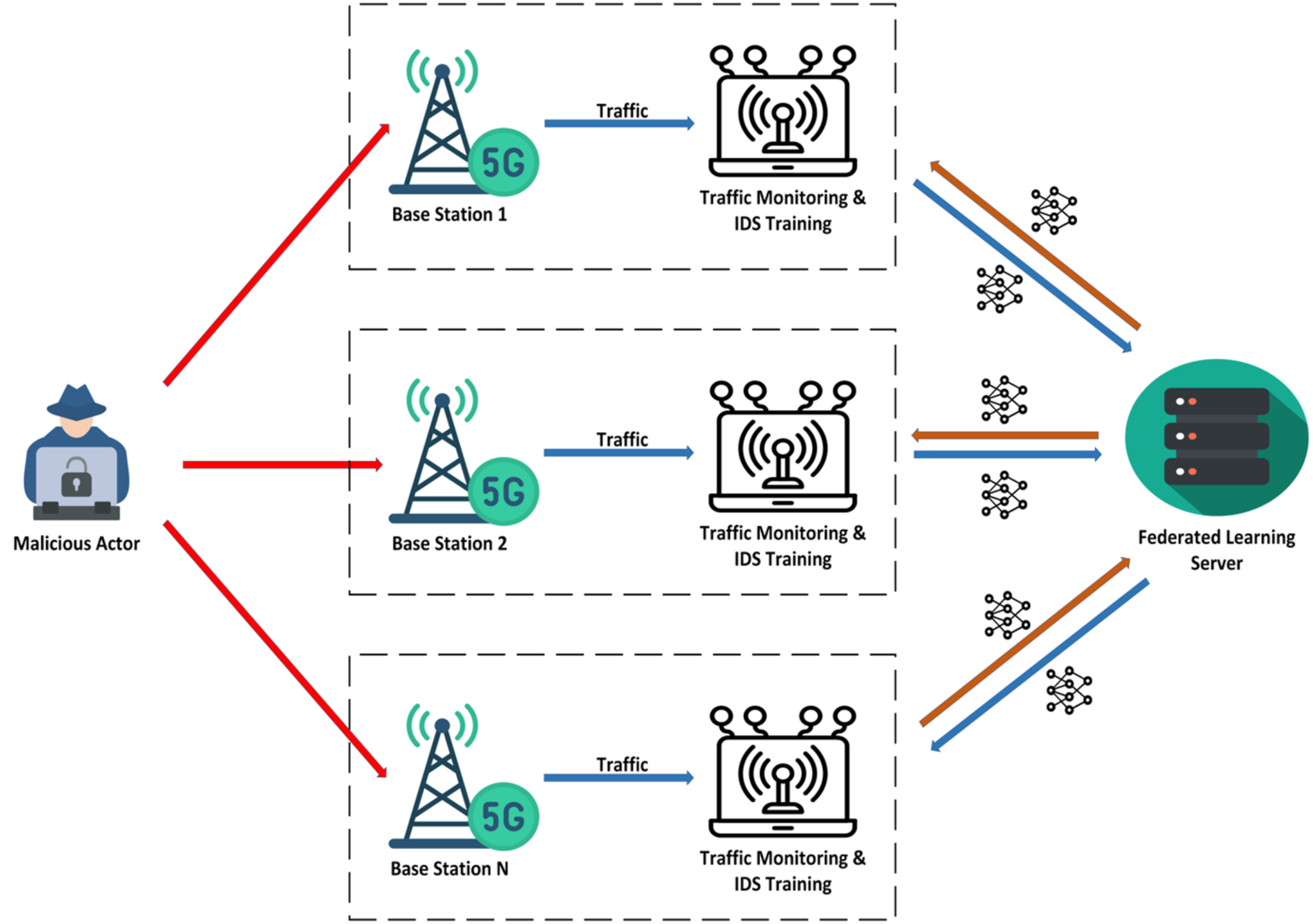Authors: MINDS
Ioannis Makris
Dimitrios-Christos Asimopoulos
Nikolaos Moschos
Nikolaos Ntampakis
Andreas Maropoulos
Vasileios Gavresis
The evolution of communication technologies in the era of fifth-generation (5G) wireless networks, marked significant advancements in connectivity, speed, reliability, and overall network capabilities. However, as 5G becomes integrated into various aspects of life, from Internet of Things (IoT) environments to critical infrastructure components like healthcare facilities and financial systems, concerns about security and privacy have surfaced.
The increased number of interconnected devices within 5G ecosystems has created potential vulnerabilities, making them targets for malicious actors, and, thus, the deployment of effective Intrusion Detection Systems (IDS) becomes crucial in safeguarding network integrity. Traditional IDSs face considerable challenges in the dynamic and complex landscape of 5G networks. The heterogeneity of devices, diverse communication protocols, and data formatting demand a unified intrusion detection system capable of monitoring all network traffic types. Moreover, applications relying on 5G, such as autonomous vehicles and industrial automation, necessitate minimal latency, posing additional hurdles for IDS implementation. Real-time traffic analysis without significant delays is imperative for detecting potential threats among the massive data volume generated by 5G networks. Finally, the diverse nature of entities participating in 5G networks—ranging from individual users to large corporations and public authorities—raises privacy concerns, and as a result, the monitoring of network traffic and the identification of potential attacks must align with users’ privacy rights.
Toward this, one promising solution is the integration of IDS within a Federated Learning (FL) framework. FL capitalizes on the decentralized nature of 5G networks, leveraging the diverse devices and network edges to collectively train IDS models without necessitating data sharing between nodes. This innovative approach addresses privacy concerns by ensuring that data remains localized at each node during training. By doing so, FL enhances adaptability and detection capabilities across the entire system, while its adoption substantially reduces communication costs, as data transmission through the network is not required.
In the context of addressing security challenges within 5G networks, NANCY adopts and integrates FL methodologies at its core functionalities as shown in Figure 1. Leveraging the fast-evolving FL framework known as “Flower,” the NANCY project investigates various aggregation strategies to optimize IDS training across distributed 5G network nodes. By building upon the principles of FL, NANCY ensures that sensitive data remains localized at each node, thus mitigating privacy concerns while enhancing the adaptability and detection capabilities of the IDS system.

Through FL and additional emerging technologies, NANCY aligns with the broader efforts to enhance network security in the face of emerging threats but also underscores the need for collaborative and cutting-edge solutions in the dynamic landscape of 5G communication technologies.





